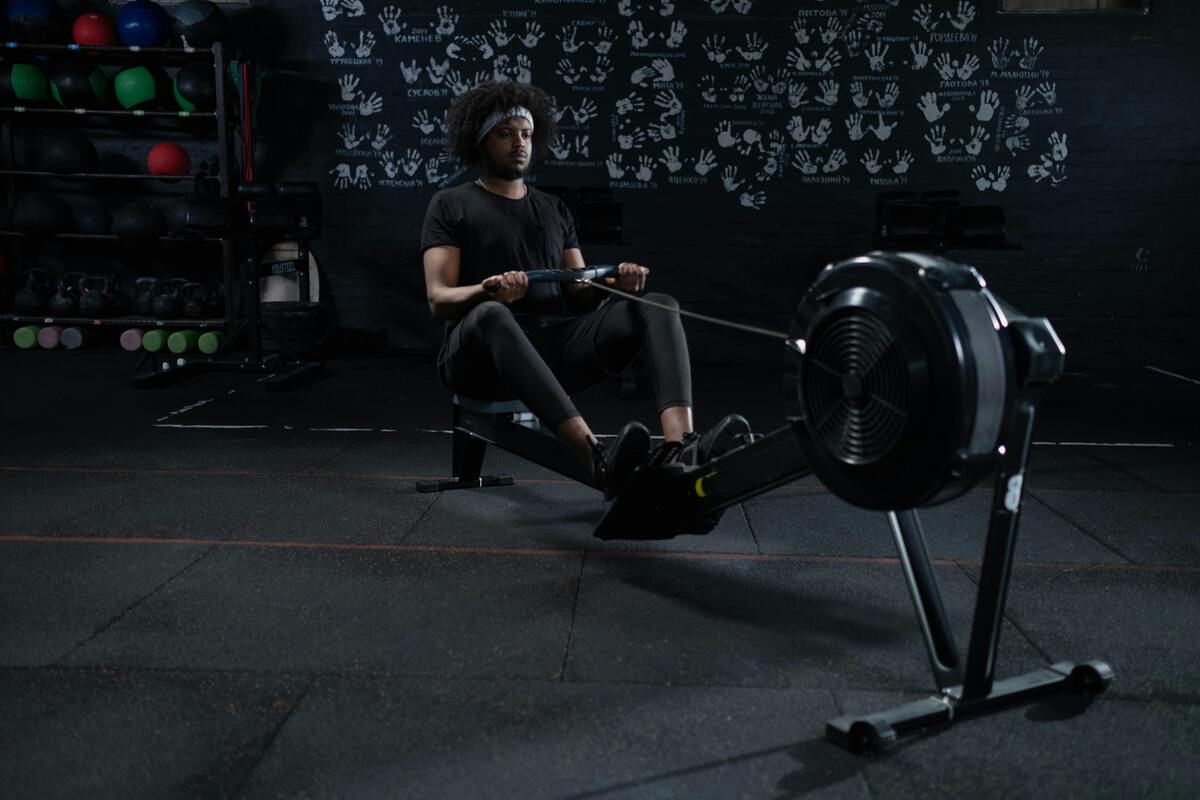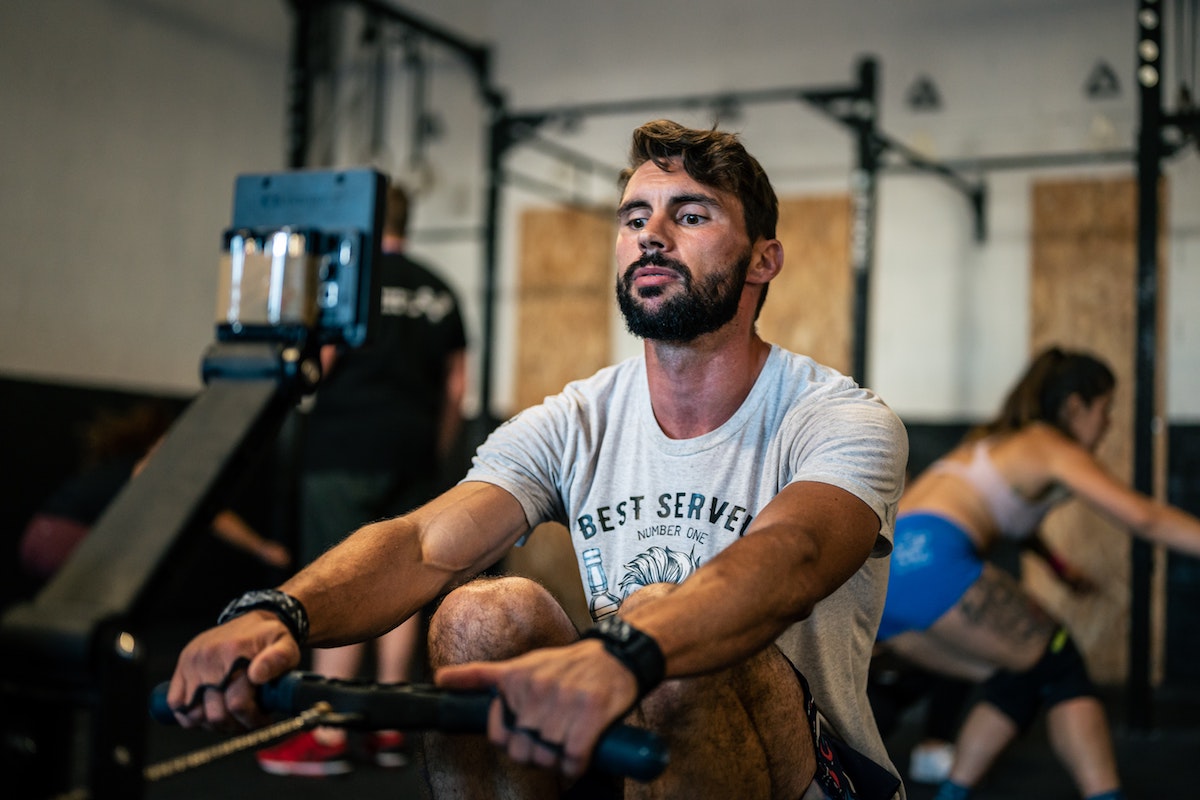If you go to the gym, you have likely noticed that the rowing machine is a popular form of exercise. As a personal trainer and workout enthusiast myself, I enjoy including the rowing machine in my weekly routine. The equipment piece is known for getting your heart rate up, but can a rowing machine build muscle, too?
If you are currently looking to improve your strength and don’t know the best forms of cardio to have in your regimen, this article can shed some light. Let’s dive in!
Can a rowing machine build muscle?

Yes, a rowing machine can help build muscle. It provides a full-body workout that combines both strength and cardio, which can lead to muscle growth over time. In fact, an NIH study shares that “rowing is associated with adaptation not only of the heart, including both increased internal diameters and myocardial size, but also skeletal muscles with hypertrophy of especially slow-twitch muscle fibres.”
The resistance involved in rowing challenges the muscles, especially when you increase intensity or duration. While primarily a cardiovascular exercise, the resistance element engages multiple muscle groups, promoting endurance and strength development.
By varying the resistance levels and rowing technique, you can target different muscle groups for balanced muscle growth. However, for optimal muscle building, it’s important to combine rowing with other strength training exercises.
What muscles does a rowing machine target?

As we just mentioned, a rowing machine can provide a full-body workout by targeting various muscle groups simultaneously. It engages the legs, particularly the quadriceps, hamstrings, and glutes, during the drive phase. The core muscles, including the abdominals and obliques, are activated to stabilize the body throughout the movement. The upper body muscles, such as the back, shoulders, and arms, also work to pull the handle toward the chest.
Rowing is effective for strengthening both the pushing and pulling muscles, promoting balanced muscle development. The combination of cardiovascular and strength training makes rowing a great exercise for improving overall fitness.
What are the other benefits of rowing machines?

Improves cardiovascular health
Rowing is an excellent form of cardiovascular exercise, helping to strengthen the heart and increase lung capacity. Regular rowing can improve overall cardiovascular endurance, which is beneficial for heart health and stamina. When people think of cardio, they usually imagine running, but rowing can be a great alternative for many people.
Burns calories
Rowing is an effective calorie-burning exercise that can aid in weight loss or weight management. It’s an intense workout that increases heart rate and helps burn calories, promoting fat loss. The combination of resistance and endurance training makes rowing an efficient way to burn calories while building strength.
Low-impact option
Because you sit on a rowing machine, it is considered a low-impact exercise, making it ideal for people with joint concerns or those recovering from injury. The smooth motion of rowing minimizes stress on the joints while still providing a challenging workout. It’s an excellent choice for individuals looking to stay active without straining their bodies.
How to incorporate rowing into your routine

To incorporate rowing into your routine to see results, start by adding it as a warm-up or cool-down to your existing workouts. Aim for two to three sessions per week, gradually increasing the duration and intensity as your fitness improves. You can alternate rowing with strength training or other cardio exercises to avoid overuse injuries.
Consider interval training, such as rowing for 30 seconds at high intensity followed by a 1-minute rest, to boost cardiovascular fitness and burn more calories. As you get more comfortable, increase your rowing duration to 20 to 30 minutes for an effective full-body workout and to really get your heart rate up.
Frequently asked questions

Is 20 minutes of rowing a day enough?
Yes, 20 minutes of rowing a day can be enough for improving cardiovascular fitness and building strength, especially if you’re consistent. While it’s a solid workout for endurance and full-body activation, for maximum results, combine rowing with other exercises targeting different muscle groups and gradually increase intensity.
Can you get in shape by just rowing?
Yes, rowing can help you get in shape, as it provides a full-body workout, improving cardiovascular health, building strength, and enhancing endurance. However, for balanced fitness, it’s beneficial to incorporate other exercises like strength training or flexibility work. Rowing alone can be effective but may limit muscle variety. Diet also plays an integral role in your physique and health, so that aspect cannot be neglected, no matter what your exercise routine looks like.
What are the disadvantages of a rowing machine?
One disadvantage of a rowing machine is the risk of poor form, which can lead to back or knee injuries. It may also lack variety in muscle engagement compared to other machines, potentially leading to imbalances. Additionally, it might not be as engaging for those who prefer more dynamic workouts.




